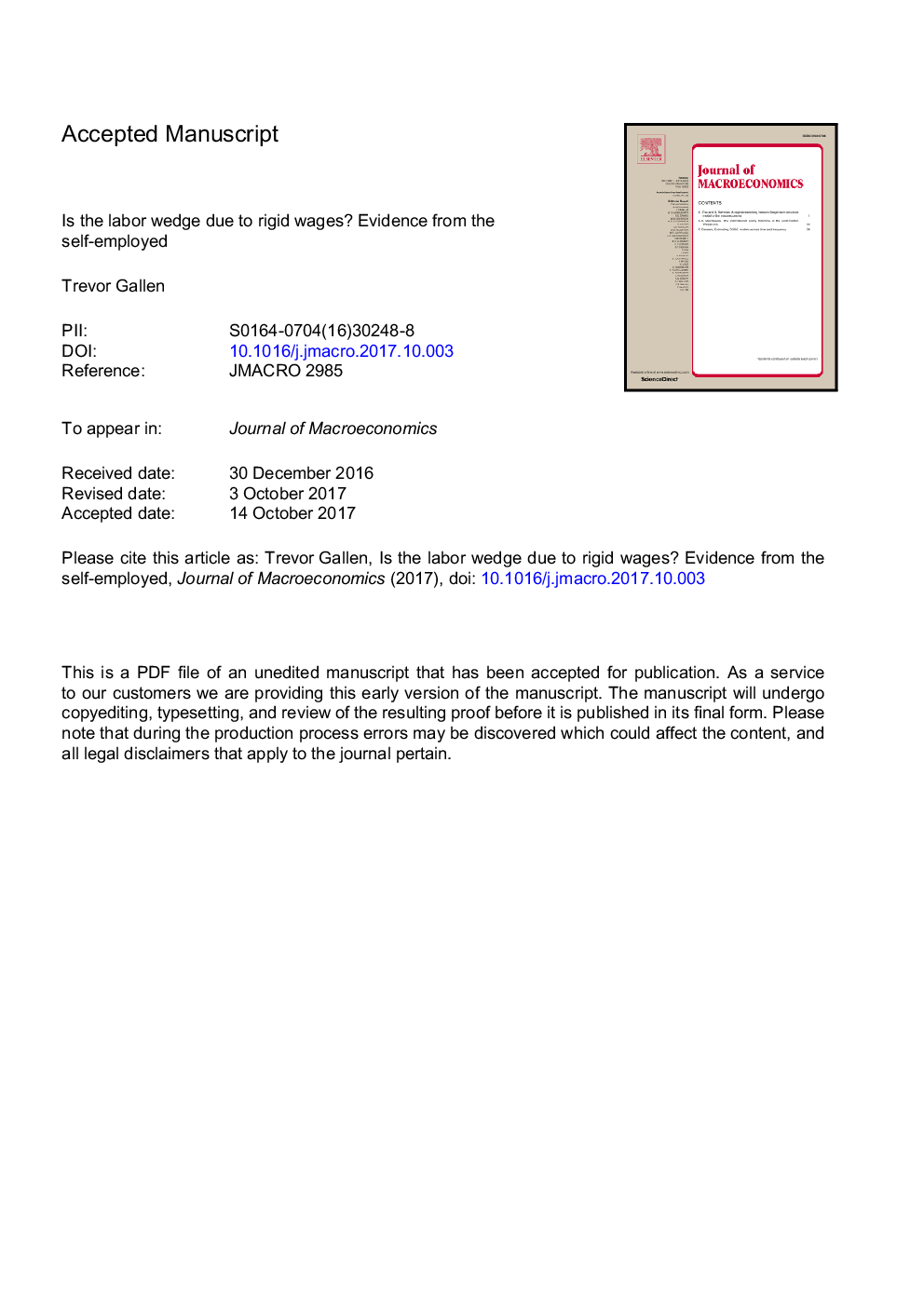| Article ID | Journal | Published Year | Pages | File Type |
|---|---|---|---|---|
| 7366879 | Journal of Macroeconomics | 2018 | 34 Pages |
Abstract
A central goal of labor economics is explaining cyclical variation in hours worked. Procyclical hours can always be explained in a market clearing model with a residual tax wedge, the “labor wedge.” Convincing progress has been made in reducing the cyclical volatility in the labor wedge and therefore explaining movements in hours worked by amplifying technology shocks with endogenously rigid wages [Hall, R. E., 2005. Employment Fluctuations with Equilibrium Wage Stickiness. American Economic Review 95 (1), 50-65.],[Shimer, R., 2010. Labor Markets and Business Cycles. Number 9217 in Economics Books, Princeton University Press.], and rigid wages in general. This paper demonstrates that the cyclical component of labor hours for the self-employed, who are not vulnerable to such frictions, is of comparable cyclicality and volatility as the cyclical component of labor hours for wage and salary workers, even conditioning on wages, consumption, and occupation-industry composition. This finding suggests that explaining the labor hours of the self-employed presents a new test for amplification mechanisms.
Related Topics
Social Sciences and Humanities
Economics, Econometrics and Finance
Economics and Econometrics
Authors
Trevor S. Gallen,
